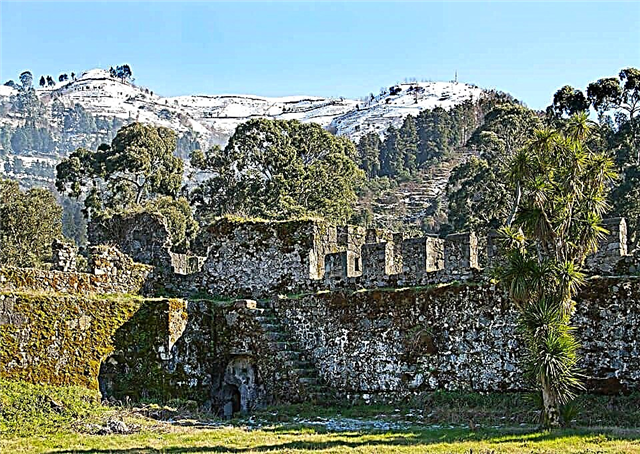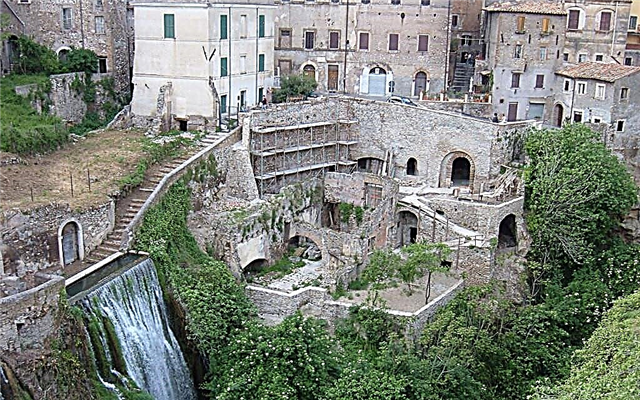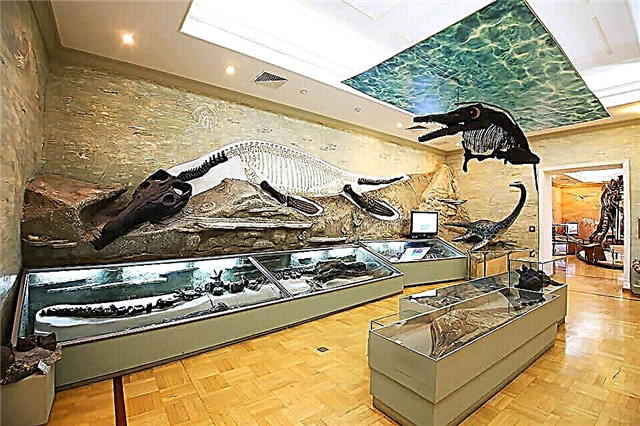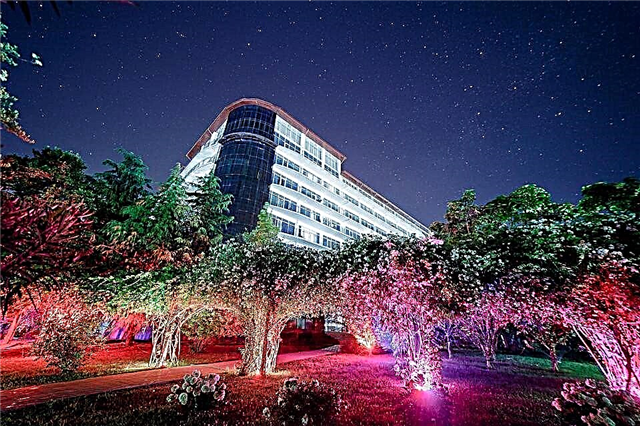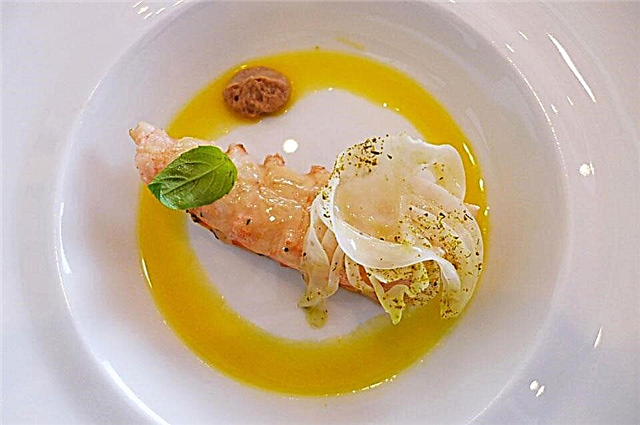The majestic and laconic Trinity Cathedral stands out among the churches of Ivanov's urban development. It is a complete copy of the Cathedral of the same name of the Trinity-Sergius Lavra, built in the 20s of the 15th century. Compared to the ancient church, the Ivanovo temple is quite young - it was erected already in the 21st century. However, it has a much more ancient history, which began within the walls of the Intercession Monastery.
History of the old Trinity Cathedral
The village of Ivanovo once stood in the southeast of the modern regional center. And nearby, on a wooded hill between Uvodya and Kokuy, there was an old Pokrovskaya monastery, created here in the 70s of the 16th century. According to the surviving legend, the owners of Ivanovo, the princes of Cherkassk, are considered the founders of the monastic desert. They received these lands as an inheritance from Tsar John IV (the Terrible) in 1561. Such a generous gift from the sovereign was not accidental, because the tsar was married for several years to the princess of Cherkasskaya - Maria Temryukovna.

View of the Church of the Holy Trinity from Lenin Avenue
The Cherkasskys' monastery was created in memory of the capture of Kazan, which, as you know, took place on the Orthodox holiday of the Intercession of the Mother of God. Soon a settlement arose near the monastery, the inhabitants of which were engaged in agriculture and crafts.
The first written information about the Trinity Church dates back to 1632. According to the descriptions, it was a church made of wood with side-chapels dedicated to the feast of the Intercession of the Virgin and the Monk Sergius of Radonezh. The chronicles for 1646 also speak of the second monastery church - a tent-roofed church dedicated to the Kazan icon of the Mother of God. It is known that the Intercession Monastery was maintained at the expense of the princes of Cherkassk.
For a long time, all the buildings here were made of wood. But at the end of the 17th century, after the Time of Troubles and a long period of restoration of the devastated lands, funds for stone construction began to appear in Russian cities and settlements. And the first, in 1693, the newly built Church of the Intercession was consecrated. It is noteworthy, but in the ancient documents of 1719 the monastery is also called Pokrovskaya, and only four years later - already Trinity.

View of the Church of the Holy Trinity from Pochtovaya Street
At the beginning of the 19th century, the monks decided to build a new brick Church of the Trinity. However, the old wooden church was still in good condition, and they did not begin to destroy it, but carefully dismantled and moved to the territory of the nearby old Uspensky churchyard (now it is Smirnov Street). In a new place, this wooden church was rededicated in honor of the Dormition of the Most Holy Theotokos.
The sponsor of all the expensive work on the transfer of the old wooden church and the construction of the stone church was Joseph Vasilyevich Gandurin, and his brothers - Ermolai Vasilyevich and Ivan Vasilyevich helped him. I.V. Gandurin was childless, had no heirs, and decided to use all the accumulated money for the construction of a new church.
The Gandurin family became known in Ivanovo in the 18th century. Initially, they were serfs of Count Sheremetyev and traded in chintz in Astrakhan. Natural ingenuity, entrepreneurial talent and diligence allowed the Gandurin brothers to earn a lot of money, and they used the income they received to ransom their family members from serfdom. Later, the descendants of the Gandurins became one of the founders of the Ivanovo textile industry.

The project of the new temple was carried out by the Italian architect from Turin - Maricelli. He arrived in Russia in 1792 and remained in the country until 1822. Initially, Maricelli had the name Gaudenzio, but in Russia, after the adoption of Orthodoxy, they began to call him Yakov Yakovlevich.
Joseph Gandurin did not live to see the completion of construction work. He died in 1813, and the brothers continued to build the church. The temple was completed in 1819, and Archbishop Xenophon was invited to consecrate it. The big winter church turned out to be very beautiful. The main church altar was dedicated to the Life-Giving Trinity, and the side chapels - to the two iconographic images of the Mother of God revered by Orthodox Christians - "Smolenskaya" and "Sign".
The Holy Trinity Church was considered the best architectural monument of the city, built in the provincial classicism style. On all four sides, its facades were decorated with strict porticoes of six columns, at the top of which there were triangular pediments. The dome of the cult building was crowned with five expressive hemispheres with domes. Inside the church there were three-tiered iconostases, and the walls were painted with multi-colored frescoes. When Ivanovo received the status of a city in 1873, both adjacent churches - Holy Trinity and the Intercession - became cathedrals or the main city churches.

Dome of the Church of the Holy Trinity
In 1927, the Church of the Life-Giving Trinity was handed over to the Living Church community. This was the name of a group of believers, a more "convenient" for the Soviet regime of the Renovationist Church. However, the inhabitants of the city practically did not support its adherents, and the cathedral, like other city churches transferred to the "renovationists", stood half-empty.
The Holy Trinity and Intercession Cathedrals were recognized as architectural monuments during the Soviet era. But this did not prevent them from being closed and demolished in 1931. After that, an inscription was laid out on a hill made of the remaining brick that the townspeople, where there were centers of class slavery, were planning to build a palace of culture. And a year later, work on the construction of the building of the drama theater really began here. Now the territory of the former Pokrovskaya Mountain is occupied by the Palace of Arts and the A.S. Pushkin.
Construction of a new temple
In 2000, the city decided to restore the Trinity Cathedral. However, its architectural design is not at all like a cult building that was destroyed during the years of the struggle of the Soviet regime with religion. The new cathedral in its forms exactly copies the ancient cathedral of the Life-Giving Trinity, standing in the spiritual center of Russia - the Trinity-Sergius Lavra.

The Ivanovo stone one-domed temple is also made in the Old Russian style. Narrow window openings concentrate light in the spacious domed space. And in the depths of the church, the light seems to dissolve in a colorful wall painting, which is made with glue paints. The church has a rich four-tiered gilded iconostasis, and the icons fixed on it also have gilded frames.
The current state of the cathedral and the visiting regime
The church is active, and regular services are held in it. The feast day is celebrated here on June 19 - the day of the Holy Spirit. This temple has become very popular not only among pilgrims, but also among tourists traveling along the "Golden Ring" of Russia. It's not only beautiful in daylight. In the evening, the cathedral is decorated with spectacular backlighting, and therefore in the dark it is clearly visible from afar.
How to get there
The cathedral is located in the Frunzensky district of Ivanovo, on Pochtovaya street, 4, opposite the building of the Central Post Office.
By car. On the M7 highway from the capital to Ivanovo, you can drive 4.5-5 hours (290 km). From the southern outskirts of the city you need to go along Lezhnevskaya streets, 10 August and Lenin Avenue. The cathedral is located near the intersection of Lenin Avenue and Pochtovaya Street.

By train or bus. From the Yaroslavsky railway station to Moscow the train reaches Ivanovo in 7 hours. The railway station is located in the central part of Ivanovo. In addition, it takes 6 hours to get from the Central Bus Station in Moscow near the Shchelkovskaya metro station to Ivanovo by direct or transit buses. The bus station in Ivanovo operates in the southern part of the city and is 6.5 km away from the railway station. You can get to the cathedral in the city by buses, trolleybuses and shuttle buses (stop "Pochtovaya Ulitsa" or "Ploschad Pushkin").
Attraction rating:

